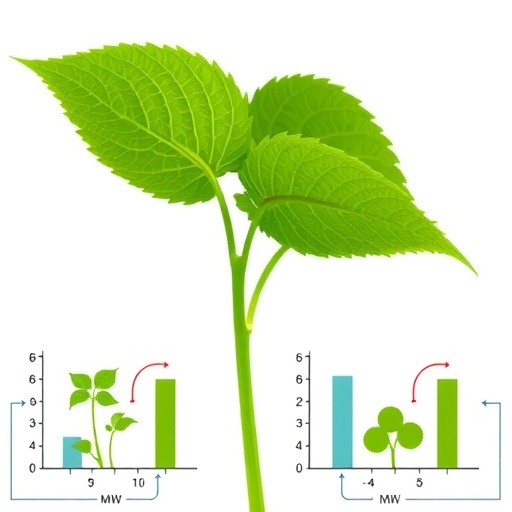The dynamics of agricultural production systems have far-reaching implications for the productivity and growth of various crops. Recent research conducted in Niger sheds light on the interaction between production systems and the leaf productivity of Corchorus species, commonly known as jute. This study reveals that the method of cultivation plays a pivotal role in determining the yield and overall health of these plants, which are increasingly important in various economic contexts. The findings underscore the necessity for farmers and agricultural stakeholders to adopt best practices that can maximize output while ensuring sustainability.
The research identifies various production systems utilized in Niger, each offering distinct advantages and limitations. Conventional agriculture, often characterized by monoculture practices, contributes significantly to economic gains yet may compromise biodiversity. On the other hand, more integrated approaches, including agroforestry and polyculture, have been shown to enhance soil health and crop resilience. The study emphasizes the potential for innovative farming techniques to optimize the growth of Corchorus species, thereby meeting both local and global demands for jute.
In recent decades, jute has gained international prominence due to its versatile applications in textiles, packaging, and other industries. With increasing awareness of environmental sustainability, demand for natural fibers like jute has surged. As such, understanding the physiological responses of Corchorus to different agricultural practices is crucial for improving cultivation strategies. This research contributes valuable insights into the specific growth patterns and productivity variations observed under different systems in Niger, presenting new opportunities for agricultural advancement.
The study meticulously examines leaf productivity as a key indicator of the health and viability of Corchorus species. Leaves are essential not only for photosynthesis but also for nutrient accumulation, affecting overall plant vigor. Utilizing a comprehensive approach, the researchers investigated how diverse factors such as soil composition, water availability, and the microclimate influenced leaf development across varying production systems. The findings indicate that integrated systems often yield higher leaf productivity compared to conventional methods, largely due to improved soil structure and moisture retention.
An intriguing aspect of the research is the application of quantitative analysis to measure leaf area index (LAI) among the different cultivation systems. The LAI metrics serve as a vital benchmark for assessing productivity; a higher LAI typically correlates with greater biomass accumulation and, subsequently, higher economic returns. The findings highlight that farmers employing integrated production strategies can achieve optimal LAI values, thus enhancing their profitability while minimizing resource input.
Tied closely to the productivity of Corchorus is the concept of resource management. The study posits that efficient use of water and nutrients is critical for maximizing yields. In Niger, where water scarcity can pose significant challenges, adopting resource management practices that incorporate rainwater harvesting and optimized fertilization can significantly alter the outcome of Corchorus growth. By demonstrating the importance of these management techniques, this research advocates for widespread adoption among local agricultural communities, aiming for a sustainable increase in jute production.
Furthermore, the social implications of these findings cannot be overstated. Jute cultivation is not merely an agricultural endeavor in Niger but also a means of livelihood for countless families. The results of this study provide invaluable information for farmers, governmental bodies, and NGOs involved in agricultural development. By emphasizing the benefits of integrated systems, the research potentially paves the way for policies that promote sustainable agricultural practices.
The implications of this research extend beyond the immediate geographical context of Niger. As the global demand for sustainable materials grows, the knowledge gained from these findings may inform agricultural practices in similar environments across the world. The adaptability of Corchorus species to varying growth conditions makes this research particularly relevant in the context of climate change. By understanding how production systems influence plant growth, farmers globally can make informed decisions that contribute to both local food security and the international market.
A dedicated segment of the study focuses on the implications of climate factors on Corchorus productivity within different production systems. Fluctuating weather patterns and changing temperatures can dramatically influence agricultural outputs. This research provides a roadmap for mitigating these impacts by identifying which production systems can best withstand climate variability. By establishing resilient agricultural practices, farmers can ensure stable production levels, even amidst unpredictable climatic changes.
The incorporation of modern technology in the research design, such as remote sensing for monitoring plant health and growth rates, is a significant step forward. This technological advancement allows for real-time data collection and analysis, enabling researchers to draw precise conclusions regarding the interplay between various production systems and plant growth. Through such innovative approaches, this study sets a precedent for future agricultural research that can harness technology to solve pressing agricultural challenges.
Additionally, the role of community engagement in the transition toward enhanced production systems is emphasized throughout the study. Techniques such as farmer field schools and peer education can foster knowledge sharing and encourage the uptake of improved practices among local growers. Empowering communities through education and resources is crucial for ensuring the long-term success of sustainable agricultural initiatives.
In conclusion, the research undertaken by Maazou and colleagues offers significant insights into the intricacies of Corchorus growth in various agricultural production settings. By delineating the effects of different farming practices on leaf productivity, the study paves the way for practical recommendations that can drive both economic growth and environmental sustainability. As global agricultural challenges continue to evolve, the lessons gleaned from this research hold critical importance for both local and international stakeholders in the quest for sustainable agricultural advancement.
Subject of Research: Effect of Production Systems on Corchorus spp. Growth in Niger
Article Title: Effect of production system on leaf productivity and growth of Corchorus spp. in Niger.
Article References:
Maazou, R., Saidou, S.I., Bori, H. et al. Effect of production system on leaf productivity and growth of Corchorus spp. in Niger.
Discov. Plants 2, 264 (2025). https://doi.org/10.1007/s44372-025-00350-w
Image Credits: AI Generated
DOI: 10.1007/s44372-025-00350-w
Keywords: Corchorus, jute, agricultural production systems, leaf productivity, sustainable agriculture, Niger, climate adaptation, resource management.




